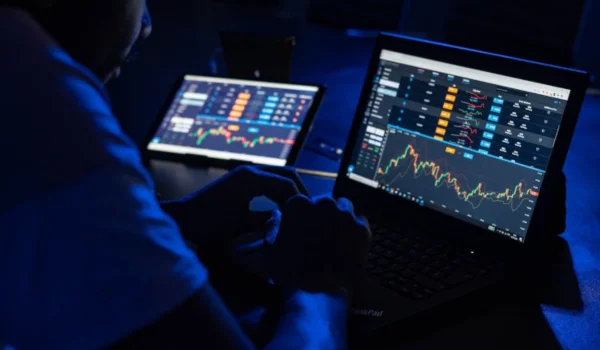The foreign exchange market, often called Forex or FX, is the largest financial market globally. It’s where currencies are bought and sold, influencing everything from the price of your morning coffee to international trade.
For many, it presents an opportunity to participate in the global economy by trading on the fluctuating values of these currencies.
The Basics of Forex Trading

At its core, Forex trading is the act of speculating on the future direction of currency prices. Currencies are always traded in pairs, like the EUR/USD (Euro/U.S. Dollar) or GBP/JPY (British Pound/Japanese Yen).
When you trade a currency pair, you are essentially buying one currency while simultaneously selling the other. If you believe the base currency (the first one listed) will strengthen against the quote currency (the second one), you would buy the pair. If you think it will weaken, you would sell it.
Market Participants
A wide range of participants drives the Forex market. Central banks, like the U.S. Federal Reserve, are major players, using currency exchange to manage their country’s money supply and interest rates.
Large commercial banks execute trades for themselves and their clients, accounting for a significant portion of daily volume. Then there are multinational corporations that trade currencies to pay for goods and services in foreign countries.
Finally, individual retail traders participate, often through online brokers, speculating on currency movements to generate profit. The question of what is forex trading often begins with understanding who is involved and why they trade.
Forex Trading Mechanics
Trading in the Forex market happens electronically over-the-counter (OTC), meaning there is no central physical exchange. Instead, it operates through a global network of banks, corporations, and individuals.
This market is open 24 hours a day, five days a week, across major financial centers like London, New York, Tokyo, and Sydney. The continuous trading cycle allows participants to react to news and events as they happen, regardless of the time of day.
Factors Influencing Exchange Rates
Several dynamic factors cause exchange rates to fluctuate. Economic data releases, such as inflation reports, employment figures, and gross domestic product (GDP) growth, have a substantial impact.
Interest rate decisions by central banks are also critical; higher interest rates can attract foreign investment, strengthening a currency. Political stability and geopolitical events can introduce uncertainty, leading to significant price swings. Traders monitor these elements closely to anticipate market movements.
Essential Tools and Resources
To trade effectively, you need access to certain tools. A reliable trading platform is your gateway to the market, providing live price quotes, charting software, and the ability to execute trades.
These platforms often include technical analysis indicators that help traders identify trends and potential trading opportunities. Staying informed with a real-time financial news feed is also vital for keeping up with economic announcements that could affect currency values.
Common Forex Trading Strategies
Traders use various strategies to navigate the market. Scalping involves making numerous small trades throughout the day to capture tiny price movements. Day trading is similar, but traders close out all their positions before the market closes for the day.
Swing trading is a medium-term strategy where positions are held for several days or weeks to profit from larger price swings. Position trading is a long-term strategy, with trades lasting for months or even years, based on fundamental economic factors.

Hello, I’m Kapil Kumar, a seasoned SEO expert and blogger at WinnersList.in. My mission is to spotlight exceptional individuals and organizations across various domains. Through curated lists, profiles, and inspiring stories, I aim to celebrate outstanding achievements and inspire the next generation of champions. Join me in this journey.
